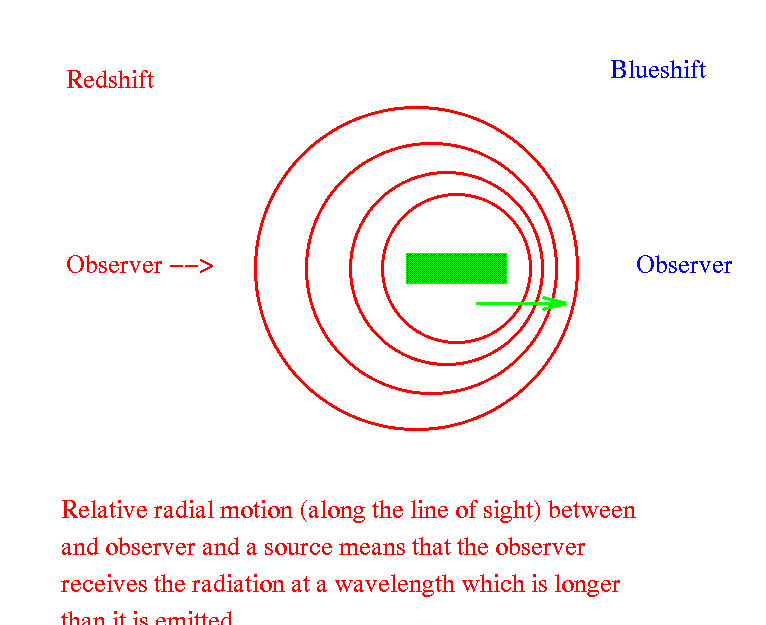Doppler Shift
For a classical wave, imagine a pond of water on which a periodic disturbance is made. The disturbances generate a series of concentric outward moving pulses (waves). The wavelength is the distance between the pulses and the frequency is the rate at which the pulses pass by an observer.

